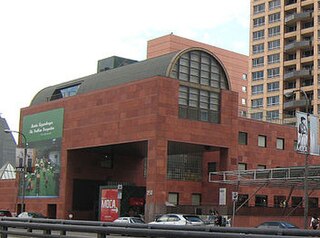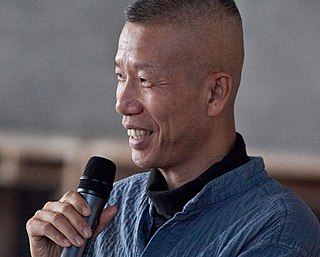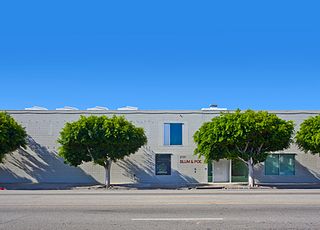| Murakami-Ego | |
|---|---|
| Genre | Superflat Art, Pop Art |
| Venue | ALRIWAQ Doha exhibition space |
| Location(s) | Doha |
| Country | Qatar |
| Organized by | The Qatar Museums Authority |
| Website | |
| http://ego.qma.org.qa | |
Murakami-Ego is the name of an exhibition by Japanese artist Takashi Murakami that took place in ALRIWAQ Doha exhibition space, Qatar, between 9 February and 24 June 2012. [1] It is the first solo exhibition for the artist in both Qatar and the Middle East, [2] as well as his biggest exhibition ever, showcasing over 60 works created since 1997, alongside new ones designed especially for the exhibition. [2]

An exhibition, in the most general sense, is an organised presentation and display of a selection of items. In practice, exhibitions usually occur within a cultural or educational setting such as a museum, art gallery, park, library, exhibition hall, or World's fairs. Exhibitions can include many things such as art in both major museums and smaller galleries, interpretive exhibitions, natural history museums and history museums, and also varieties such as more commercially focused exhibitions and trade fairs.

Takashi Murakami is a Japanese contemporary artist. He works in fine arts media as well as commercial media and is known for blurring the line between high and low arts. He coined the term "superflat", which describes both the aesthetic characteristics of the Japanese artistic tradition and the nature of post-war Japanese culture and society, and is also used for Murakami's artistic style and other Japanese artists he has influenced.

Qatar, officially the State of Qatar, is a country located in Western Asia, occupying the small Qatar Peninsula on the northeastern coast of the Arabian Peninsula. Whether the sovereign state should be regarded as a constitutional monarchy or an absolute monarchy is disputed. Its sole land border is with neighbouring Gulf Cooperation Council (GCC) monarchy Saudi Arabia to the south, with the rest of its territory surrounded by the Persian Gulf. An arm of the Persian Gulf separates Qatar from the nearby Bahrain.
Contents
Murakami-Ego is, additionally, the third and last chapter of a trilogy of exhibitions that started off in the Museum of Contemporary Art in Los Angeles, then moved to the Château de Versailles in Paris. [3] The exhibition was curated by Massimiliano Gioni, one of the most important contemporary Italian art critics and curators. [3]

The Museum of Contemporary Art, Los Angeles (MOCA) is a contemporary art museum with three locations in greater Los Angeles, California. The main branch is located on Grand Avenue in Downtown Los Angeles, near the Walt Disney Concert Hall. MOCA's original space, initially intended as a "temporary" exhibit space while the main facility was built, is now known as the Geffen Contemporary, in the Little Tokyo district of downtown Los Angeles. The Pacific Design Center facility is in West Hollywood.

The Palace of Versailles was the principal royal residence of France from 1682, under Louis XIV, until the start of the French Revolution in 1789, under Louis XVI. It is located in the department of Yvelines, in the region of Île-de-France, about 20 kilometres southwest of the centre of Paris.

Paris is the capital and most populous city of France, with an area of 105 square kilometres and an official estimated population of 2,140,526 residents as of 1 January 2019. Since the 17th century, Paris has been one of Europe's major centres of finance, diplomacy, commerce, fashion, science, and the arts.











